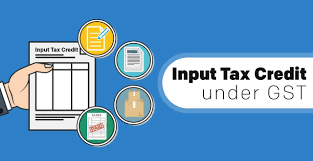Food delivery app will not to get ITC w.e.f 1 Jan 2024
Page Contents
Food delivery app will not to get ITC on New GST regime w.e.f 1 Jan 2024
E-commerce Operators in food delivery not to get input tax credit under new Goods and Services Tax regime from January 1, Food delivery apps to collect tax, deposit on behalf of restaurants with the government
GST dept. received representation on Input tax credit eligibility & other issues. Because of restaurants paying Goods and Services Tax at the rate of 5 % are not eligible for Input tax credit & only the onus to deposit the Goods and Services Tax has changed, there is no possibility of Input tax credit for food delivery portals. The Goods and Services Tax Council recommended for change on the basis of a suggestion by an e-commerce sectoral study of suppliers/ECOs dealing in food delivery.
Restaurants will also have to compulsory Goods and Services Tax register themselves as is done by e-commerce sellers. Restaurants will have to bear additional compliance burden & they will have to account for not only their routine business however now separate books of accounts for business done via Food delivery apps or platforms like Zomato, Swiggy. For the total, this will also increase the burden of Goods and Services Tax compliance towards collecting & accounting for GST on behalf of restaurants. In conclusion, we can say that Food delivery apps space like Zomato , Swiggy will not get Input tax credit under new Goods and Services Tax mechanism coming into effect from 1st January, 2024
FAQ on e-commerce operator:
Question-1: Person Selling via e commerce operator whether for input tax credit available on shipping charges refund application can be filled or not because there is large amount of unutilised input tax credit in electronic credit ledger
Answer: The e-commerce operator is required to collect tax at source(TCS) at the rate of 1% on the net value of taxable supplies made through it by other suppliers. The TCS collected by the e-commerce operator can be claimed as ITC by the e-commerce seller in their GSTR-3B return. The input tax credit can be used to pay the output tax liability or can be carried forward to the next tax period. However, if the e-commerce seller has a large amount of unutilised input tax credit in their electronic credit ledger, they can file an application for refund of the excess input tax credit under the Goods and Services Tax law.
As an e-commerce operator, you will also need to collect tax at source (TCS) at the rate of 1% on the net value of taxable supplies made by sellers through your platform. You will need to deposit the collected TCS to the government and report it in your GSTR-8 return every month. You will also need to issue proper tax invoices, comply with e-way bill requirements, and maintain records of your transactions.
Question: Everyone, can anyone tell that where to Show the supplies made through E-Commerce operetors in GSTR-1 ?
Answer : for e-commerce operator tick the checkbox ‘Is E-commerce’. Enter the Taxable Value of supplies made in the taxable value field. Based on inter-state or intra-state transactions CGST and SGST or IGST will appear in the amount of tax field.
Question 2: hotel booking via make my trip and others are covered under section 9(5) ? They are already deducting TCS. Will this booking constitute EXEMPT supply ?
Answer: This means that the e-commerce operators are liable to pay Goods and Services Tax on the hotel accommodation services provided through them, as if they are the suppliers of such services. The Goods and Services Tax rate applicable for hotel accommodation services is 12% or 18%, depending on the tariff of the hotel room. And The e-commerce operators are also required to collect tax at source (TCS) at the rate of 1% on the net value of taxable supplies made by other suppliers through them. The TCS collected by the e-commerce operators can be claimed as ITC by the hotel owners in their GSTR-3B return.
CBDT Guidelines & FAQs on Section 194-O in Multiple E-commerce Operator Model Framework:
FAQs on Sec 194-O in Multiple E-commerce Operator Model system

